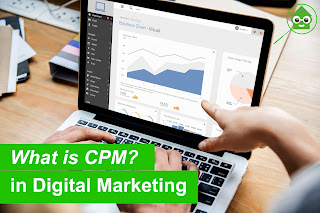What Is CPM? Cost Per Thousand Impressions Explained

CPM (Cost per Mille) is a metric that reflects the average cost per 1,000 ad impressions. In addition, CPM is used in internet marketing as an advertising payment model where a business pays for ad impressions rather than clicks or conversions. Typically, CPM is used as a performance metric for display advertising. The goal of this type of campaign is to make contact with the target audience in order to form an image of a company or product in it. Understanding the cost per 1000 impressions allows you to compare the effectiveness of different formats, campaigns, types of advertising, sites and choose the most profitable ones.
At the same time, CPM can be calculated for both contextual and targeted advertising.
How to calculate CPM
To understand how much you paid for 1000 ad impressions, you need to know:
- the number of impressions of campaign ads;
- campaign costs.
The formula for calculating CPM looks like this:

For example, an advertiser spent $500 on a campaign, and ads appeared 100 000 times.
CPM = $500 / 100 000 * 1000 = $5
For every 1000 impressions, the advertiser paid an average of $5.
What does CPM depend on?
CPM in online marketing is influenced by various factors, for example:
- Competition. The more advertisers targeting a site or an audience, the higher the cost of impressions will be.
- Ad site traffic. The larger the audience of the site, the higher the cost per impression.
- Location of the ad block. Impressions on the first screen are more expensive than, for example, on the fifth, because more users will see the ad on the first screen.
- Subject. As a rule, higher-quality sites, for example, about finance and economics, attract more solvent audiences than entertainment ones, and this is valuable and beneficial for advertisers.
- Ad Format. Video ad impressions are usually more expensive than banner ads because videos get more attention.
- Geotargeting. Advertising in the capital is usually more expensive than in the regions. This is influenced by a higher standard of living in the capital, the solvency of the population and the level of competition.
CPM as a payment model
CPM can also be thought of as a pay-per-ad model where an advertiser pays for every 1,000 ad impressions on websites, social media, mobile apps, and other online platforms.
The pay per 1,000 impressions model is used in online advertising when the advertiser's goal is to generate demand for products or brand image and reputation, to talk about a promotion, and not to increase sales. However, it is important to understand that CPM campaigns do not guarantee clicks or conversions.
Read more about display advertising:
- Display advertising on the Internet - what is it, its types and formats
- How to set up display advertising in Yandex Direct - a great guide
As a rule, the cost of advertising is fixed in advance. For example, advertising on TV and in the media is often sold this way. At a fixed price, you can buy ad impressions in Yandex services, for example, a banner in a new browser tab or advertising on media services.
Advertising in Telegram Ads is paid in the same way: when setting up, the advertiser sets a bid for a thousand impressions of a specific ad. And each 1000 impressions will cost exactly as much as the advertiser indicated. In this case, the minimum bet is 2 €.
For advertising on the social network VKontakte, the same principle works: at a CPM rate of 75 rubles. 75 rubles are debited from the balance. for every 1000 impressions. At the same time, money is debited from the balances not exactly for 1000 impressions, but in smaller portions.
However, it may be different when the advertiser sets the maximum price for 1000 impressions, and how much he will eventually pay will be decided during the auction. And in this case, the calculation of the maximum CPM will help you choose the correct bid for running ads: on the one hand, it is important not to overpay, on the other hand, you need a bid that will allow you to show ads to the right audience.
Difference between CPM and CPC payment model
CPM and CPC are different payment models for online advertising.
CPM is a pay-per-thousand-impression ad model. CPC is a pay-per-click ad model. In the first case, the advertiser is not charged for clicks, and in the second case, they are not charged for impressions.
It is more effective to use payment by CPM if the goal of an advertising campaign is to increase brand awareness. Pay per click should be used when you need to get clicks to the site. In addition, the CPC model will be more profitable with a limited budget, since the advertiser only pays for real clicks on their ads.
Read about these and other online advertising payment models on the blog.
Conclusions
- What is CPM: An indicator that reflects the average cost of 1000 ad impressions.
- How to calculate CPM: Divide ad spend by number of impressions and multiply by 1000.
- CPM as a payment model assumes that the advertiser pays for ad impressions and does not pay for ad clicks or site actions.
- CPM is used to evaluate the effectiveness of display advertising. In addition, the most common pay-per-1000 impression model is typically paid for display ads.
